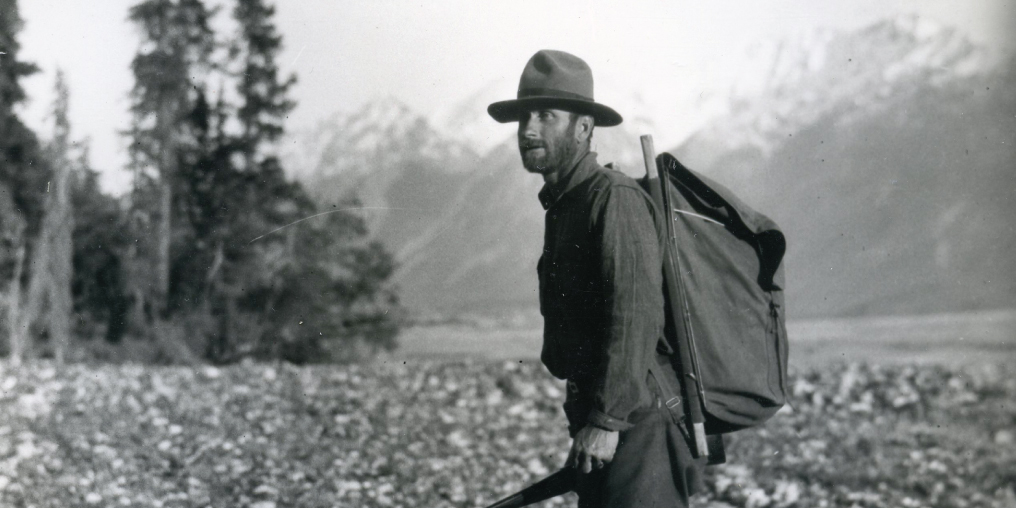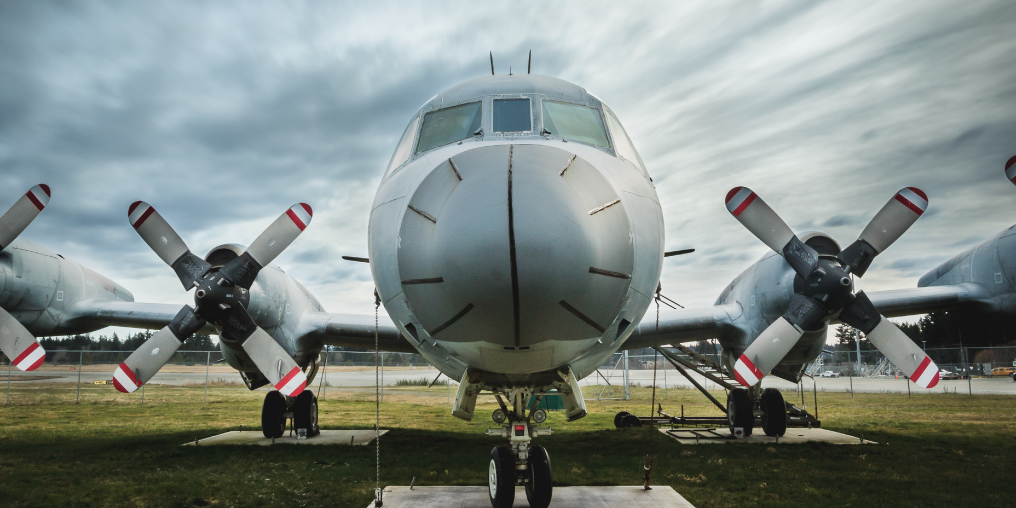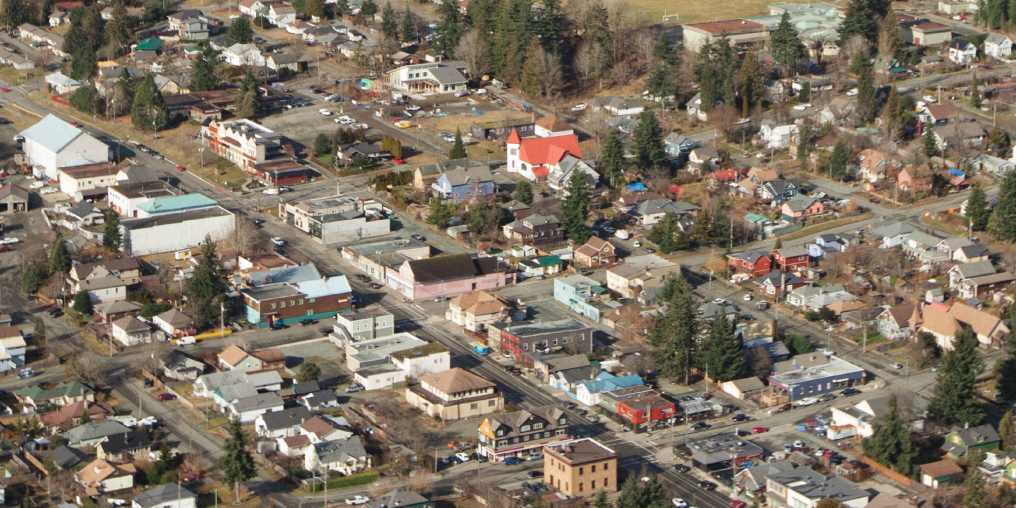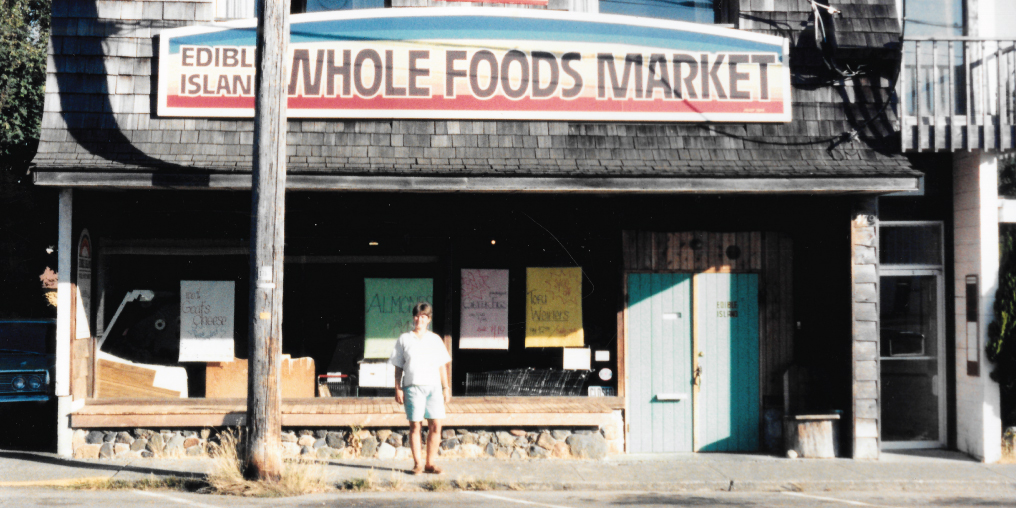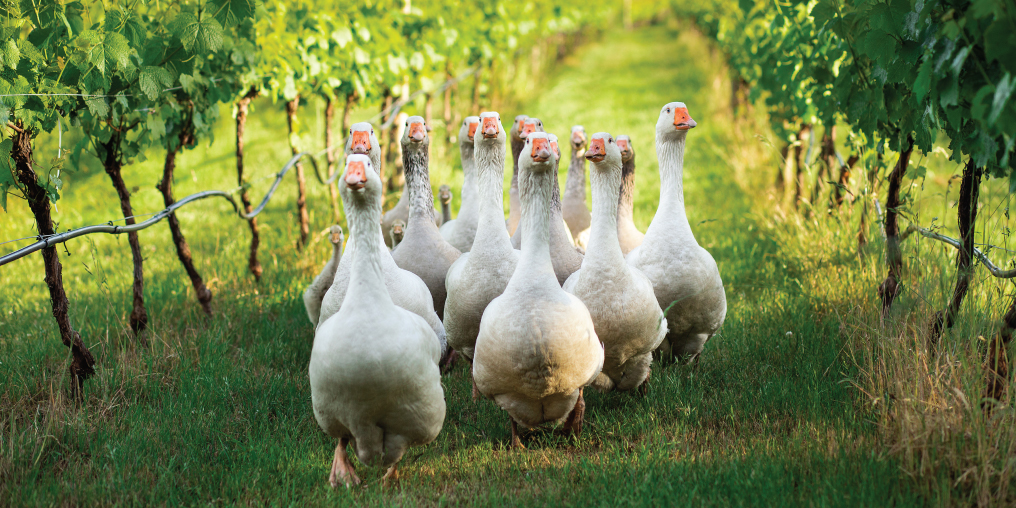“Deputy Minister Department of Mines offers services of H. M. Laing of Comox [to] accompany Expedition … to act as naturalist and motion picture photographer …”
–H.F. Lambart, Deputy Leader, Mount Logan Expedition, to Lt.-Col. W.W. Foster, Chairman of the Alpine Club of Canada’s Mount Logan Expedition Committee, March 27, 1925
In March and April of 1925, a flurry of letters and telegrams flew among the men involved in planning the upcoming expedition to conquer Mount Logan, the tallest mountain in Canada. The subject: Comox-based naturalist, writer, and photographer Hamilton Mack Laing.
The Yukon Territory’s Mount Logan had been measured earlier in the decade at 19,850 feet—much taller than Mount Robson, the pinnacle of the Canadian Rockies. Robson had first been climbed in 1913 by the famous guide and mountaineer Conrad Kain leading Albert H. MacCarthy and William Wasbrough Foster.
After the First World War, the idea of climbing Logan was revisited, and at a meeting of the Alpine Club of Canada held in Vancouver in 1923, the Mount Logan expedition was officially launched. MacCarthy was made leader of the climbing party and an executive committee was put under Foster’s chairmanship. Alpine Club of Canada co-founder A.O. Wheeler would be the expedition’s director. Accomplished mountaineers were gradually added to the team.
The race to reach the tallest peak in Canada was on.
“To Canadians especially,” the Vancouver Daily Province wrote at the time, “the projected climbing of Mount Logan parallels what the attempt to reach the top of Mount Everest is to the whole British Empire.”
Mount Logan would be a crowning achievement in a golden era of Canadian mountaineering, and the expedition members were keen to document the first-ever attempt to climb Canada’s tallest peak in photographs and on motion picture film.
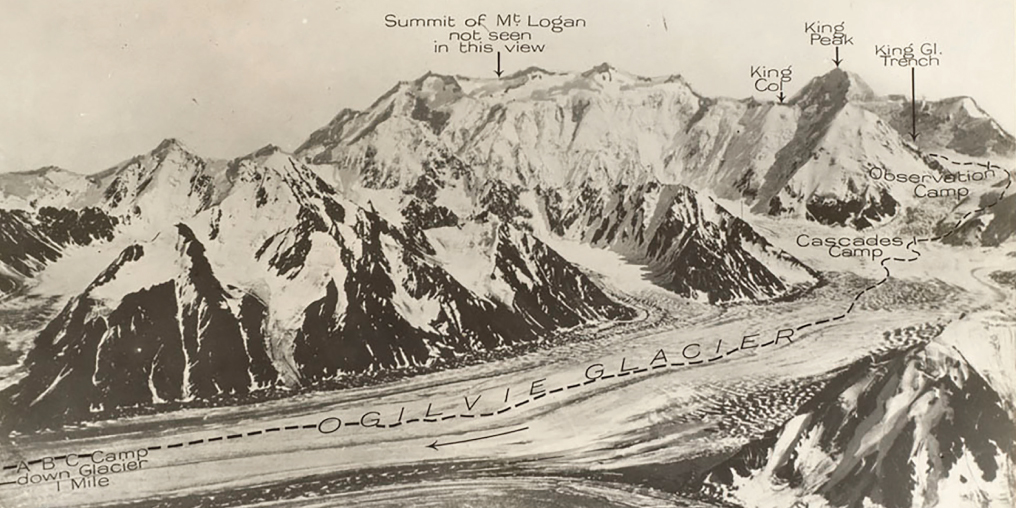
ANNOTATED PHOTOGRAPH OF MOUNT LOGAN AND OGILVIE GLACIER, YUKON TERRITORY: C. 1897.
PHOTO COURTESY OF LIBRARY & ARCHIVES CANADA / LAMBART FAMILY FONDS / E011313489_S1
Mountaineer Allen Carpé would be the American Alpine Club’s representative on the Mount Logan Expedition. He would use state-of-the-art cameras, like a Debrie Sept and a Bell & Howell Filmo, once the mountaineers were well under way, but he and the expedition’s deputy leader, H.F. Lambart, felt that one additional cinematographer was needed to capture the group as they hiked to base camp. While this “field man” could be a mountaineer, he didn’t have to be. But he did need to be competent behind a camera.
With the makeup of the expedition complete and a rendezvous for the mountaineers in Seattle arranged for the first days of May, Lambart suggested Mack Laing as a last-minute addition.
Laing was an accomplished and successful freelance writer, photographer, and field naturalist with a busy expedition career; he often worked for the Victoria Memorial Museum. He had just returned from an expedition to Japan on the H.M.C.S. Thiepval and had already lined up work for the Museum of Alberta and an expedition to Hudson Bay for the summer of 1925.
A.O. Wheeler, already a legend in mountaineering circles, wasn’t convinced. He believed the expedition was at capacity, with its budget spent and no more fat to spare on an extra member. Lambart convinced Laing’s employer L.L. Bolton, acting director of the Victoria Memorial Museum, that Laing should go. Then the pair began sending letters and telegrams to change Wheeler’s mind.
“You no doubt know him,” Lambart wrote Wheeler in a letter drafted March 26, 1925: “Mr. Hamilton Mack Laing, as he lives at Comox, and is employed often by the Department of Mines. He is young, writes well and is very well liked. I trust the committee will see their way clear of approving him as an addition.”
Lambart described Laing’s impressive record in the field, noting his self-sufficiency on expeditions in 1921 and 1922 in Manitoba, Saskatchewan, and British Columbia, specifically on Vancouver Island, for the Victoria Memorial Museum.
Laing was the logical choice: not only could he collect and prepare specimens, but he was self-sufficient and a team player—and he knew how to compose a topnotch photographic record. It didn’t hurt that recent major mountaineering expeditions had made it quite fashionable to have a naturalist along.
Laing was used to taking his own still photographs in the field for his articles, and had developed quite a reputation in that regard, but he was not a trained cinematographer. The plan was to connect him to established motion picture experts in Seattle, who could coach him for a few days, show him where to get the necessary gear, and teach him how to develop film.
In Comox, meanwhile, Laing went about his business, completely unaware of his possible involvement in the expedition, until March 27, 1925, when the life-changing telegram from his boss arrived.
To Hamilton M. Laing, Comox, Vancouver Island, B.C. From: L.L. Bolton, Acting Director of the Victoria Memorial Museum
DEPARTMENT WISHES YOU TO ACCOMPANY MOUNT LOGAN YUKON EXPEDITION AS NATURALIST INSTEAD OF ALBERTA WORK LEAVING SEATTLE MAY SECOND. RETURN AUGUST. CAN YOU REPORT SEATTLE APRIL FIFTEENTH FOR MOTION PICTURE PRACTICE? WIRE ACCEPTANCE AND LETTER INSTRUCTIONS AND ADVANCE MONEY WILL BE SENT COMOX.
Despite the short notice, Laing decided to drop his summer work plans. In his expedition diary, he would call himself “the tail of the kite.” But better to be a last-minute addition than to miss out on such an extraordinary opportunity.
On a drizzly April morning at the E&N station in Courtenay, he boarded a Royal Mail Service train to Victoria, where he caught a steamship to Seattle. Within a few weeks, he was on board the S.S. Alaska with the mountaineers, bound for Mount Logan.
The weeks that followed would be among one of the greatest adventures of Hamilton Mack Laing’s life.
Trevor Marc Hughes is a Vancouver-based writer whose upcoming book, Capturing the Summit, to be published by Ronsdale Press, outlines the expedition members’ quest to cross the border on foot and climb Mount Logan.
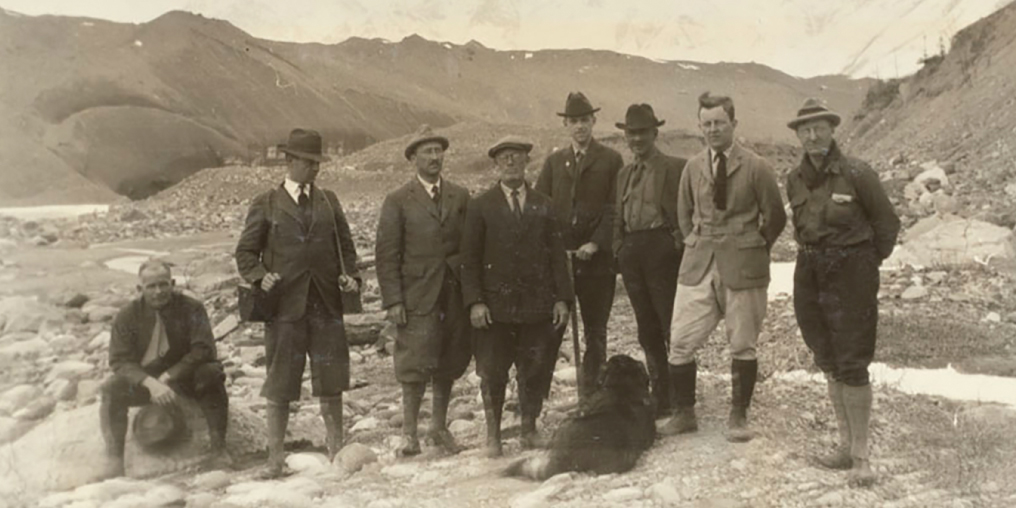
THE PARTY TAKEN BY CAPT. HUBRICK AT MCCARTHY. READ, CARPÉ, FOSTER, MACCARTHY, HALL, TAYLOR, MORGAN, HFL, ALASKA: MAY, 1925.
PHOTO COURTESY OF LIBRARY & ARCHIVES CANADA / LAMBART FAMILY FONDS / E011313489_S1

